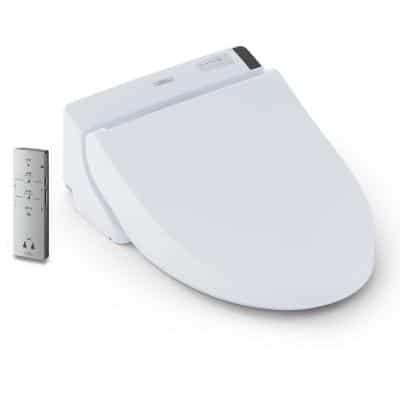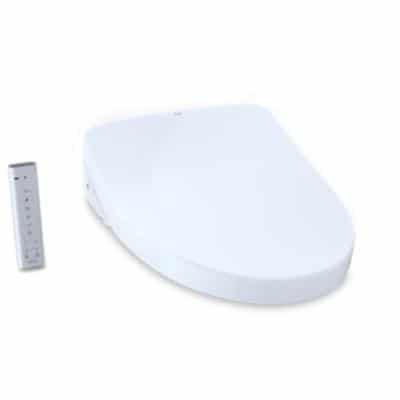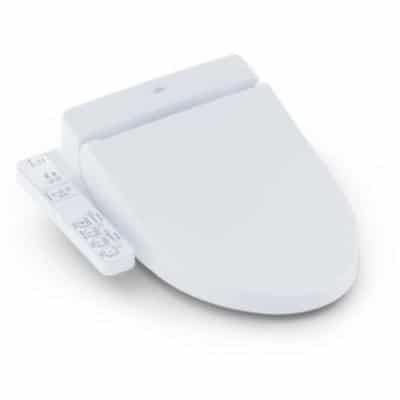

stocknroll / Getty Images
More and more Americans are retrofitting their bathrooms with high-end bidets, allowing them to enjoy cleanliness and hygiene without creating as much paper waste. Not all bidets are created equal, however, and before deciding on a particular brand, it’s important to do your homework. Take a look at our comprehensive Toto bidet review, and our reviews of Tushy and Omigo, to learn more about all of their options.
Toto overview
Toto is a company that has been around for over 100 years. They aim to improve people’s quality of life, and they do that specifically by focusing on bathrooms. To that end, Toto is known for high-quality products including toilets, faucets, showers, bathtubs, and bidets.
Toto has also expressed an admirable commitment to ecological stewardship. As their corporate website notes, they strive to “protect the global environment by conserving finite natural resources and energy.” One example of this is their donation of any imperfectly fired porcelain products for recycling and reuse as porcelain floor tile. Their packaging uses differing levels of recycled post-consumer paper products while their forklifts operate using plant-based hydraulics made from soybean oil instead of traditional hydraulic oil.
Toto is definitely a company with a superior reputation when it comes to bathroom accessories in general, and bidets in particular. Here are reviews of some of the specific products in the Toto line.
What reviewer say
There are two different bidet product families available from Toto: standalone bidets and bidet seat attachments. Their standalone models include the Piedmont bidet, the Lloyd bidet, and the Clayton bidet, while their bidet toilet seat offerings include a wide selection in the popular Washlet line. Here are details on the three standalone options and three of the most popular bidet seat attachments.
Each product featured here has been independently selected by the writer. If you make a purchase using the links included, we may earn commission.
Our take on Toto standalone bidets
Piedmont

Toto USA
Toto’s Piedmont bidet offers an elegant, classic design, and it also comes with built-in safeguards that prevent it from ever overflowing. It is available in several color options, and will look good with any contemporary bathroom design.
Why buy: This is the most affordable standalone bidet in Toto’s catalog. This bidet is a good option if you are remodeling your bathroom or are building a home and want to save water and paper waste from the start. Priced starting at 3, you can find it through other retailers for around 0.
Lloyd

Toto USA
The Lloyd bidet has a much bolder, “skirted” design, but it also shares the Piedmont’s flushing rim and integral overflow features, which keep you from ever experiencing spillage.
Why buy: This is a fancier product with a more striking appearance, and is mainly suited for a larger, more formal design. It retails for a slightly higher price point: The Lloyd model starts at 0 in total, but you can find it for 6 through other retailers.
Clayton

Toto USA
The company’s flagship standalone bidet is known as the Clayton. It includes the same overflow safeguards as the other two, and of course, each of these products is backed by Toto’s longstanding commitment to excellent craftsmanship.
Why buy: This is the most traditional in its visual style, and, with a number of colors to choose from, it will look great in almost any bathroom design. The Clayton starts at 4, but is available through other retailers for around 6.
Toto bidet seats
Toto Washlet C200

Toto USA
This electronic smart bidet seat fits onto your existing toilet bowl and offers a number of comfort features, including a heated seat, automatic air deodorizer, adjustable warm water, warm air dryer, self-cleaning wand, and a wireless remote control.
Why buy: We chose the Toto C200 as the overall best bidet in our review of top brands. In addition to the features mentioned, its dual action oscillating and pulsating spray and pre-mist function provide a comfortable and sanitary clean.
Toto Washlet S500e with EWATER+

Toto USA
The Toto Washlet S500e bidet seat includes the features found in the C200, plus instantaneous water heating, front and rear wash functions, two-user preset memory, and the company’s EWATER+ technology. This system uses electrolyzed water to keep the wand and toilet bowl clean.
Why buy: This high-end Toto electric bidet seat can help you reduce water and toilet paper use, and it can help reduce the need for chemical cleaning products with its EWATER+ technology.
Toto Washlet A100

Toto USA
The A100 is an entry-level Washlet bidet attachment, but still offers numerous comfort features. It includes a heated seat with temperature control, aerated warm water with a dual-action spray, and an attached arm control panel.
Why buy: One of the most affordable Toto bidet options, it still lets you adjust the water temperature and pressure settings, and features rear and front cleaning functionality for a feminine wash.
Toto bidet pros and cons
Whether you’re considering a standalone bidet or a bidet seat attachment, here are some of the pros and cons to help you compare your options.
Pros
- Standalone bidets, such as the ones offered by Toto, are designed in a wider range of elegant, contemporary styles. If you are looking to remodel your bathroom, splurging for a standalone bidet makes sense.
- Toto offers a wide selection of bidet and bidet attachment options. Some of their more advanced units feature night lights, adjustable nozzle positions, warm air dryers, and adjustable settings for the temperature of the water.
- All of the Toto bidet attachments we reviewed include self-cleaning nozzles for added hygiene. They are also designed for DIY installation, and easily connect to your existing toilet’s water supply without the need for a plumber or electrician.
Cons
- Toto’s line of standalone bidets and bidet seat attachments are more expensive than some other brands, especially some of their more high-end models.
- Standalone bidets may not be as convenient for those who have mobility issues.
- All of Toto’s bidet seat attachments are electric, and don’t feature an eco or energy-saving mode like some other options.
The benefits of buying a bidet
Why buy a bidet at all? There are plenty of perks, both for you and the planet:
- Bidets offer a more thorough, hygienic cleaning than toilet paper.
- They’re considerably more eco-friendly, using less water and paper.
- Because you’ll use so much less toilet paper, bidets are also more cost-effective.
- Compared with TP, bidets can be really soothing to the skin.
- They have special benefits for women, and especially pregnant women, helping minimize the risk of a UTI.
- Bidets are highly accessible, even to those with limited mobility.
- A bidet makes it much easier to teach your children about proper bathroom hygiene.
Considerations when buying a bidet
As you consider all of your options for getting a bidet, here are a few of the key factors to consider:
- Look for a bidet with a self-cleaning nozzle. This will help keep things hygienic.
- Electric vs. non-electric? Electric bidets can offer more comfort features, like a heated seat, but they also use more energy than a non-electric one.
- Is it a standalone bidet, a bidet seat, or a bidet attachment? While a standalone bidet is a completely separate fixture from your toilet, a bidet seat will completely replace your existing seat and a bidet attachment will be installed onto your existing toilet seat. These are usually the least expensive, but also come with the fewest features.
- Does the bidet connect to your home’s hot water? If it doesn’t, you will only be able to clean with cold water.
- Make sure you can adjust the settings. For the most comfortable bidet, look for controls that let you customize the water pressure, the angle of the water stream, the temperature of the water, and the temperature of the seat, if it is heated.
Use these questions to determine whether the bidets from Toto are right for you.
Toto bidets: a leader in comfort and efficiency
Toto makes durable, elegant, and highly functional products that will allow you to enjoy all the hygienic and environmental benefits of a bidet. You can also read our full review of the best bidets to compare with other brands like Brondell, Kohler, Tushy, and BioBidet.
Josh Hurst is a journalist, critic, and essayist. He lives in Knoxville, TN, with his wife and three sons. His writing on natural health, nutrition, and supplements has appeared in Health, Shape, and Remedy Review.
- Tushy Bidets are Easy to Use and Easy on the Planet - EcoWatch
- Toto Bidets Are A Clean, Comfortable Way to Save More Trees ...
- Bidet Toilet Seats Are Better For You and The Environment - EcoWatch
- Omigo Bidets are a Luxurious Way to Help the Environment ...
- A Shopper’s Guide to Home Tissue Products - EcoWatch

 233k
233k  41k
41k  Subscribe
Subscribe 